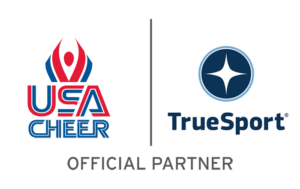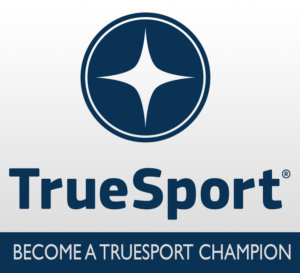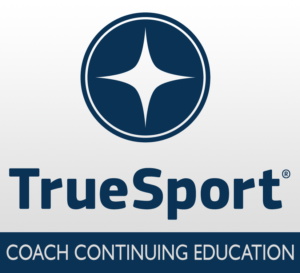3 Signs that It’s Time to Pivot and Set New Goals
USA Cheer has partnered with TrueSport, to provide new educational tools to equip coaches, parents and young athletes with the resources to build life skills and core values for success in sports and in life. TrueSport, a movement by the U.S. Anti-Doping Agency, inspires athletes, coaches, parents, and administrators to change the culture of youth sport through active engagement and thoughtful curriculum based on cornerstone lessons of sportsmanship, character-building, and clean and healthy performance, while also creating leaders across communities through sport.

3 Signs that It’s Time to Pivot and Set New Goals
As parents and as coaches, we often understand that there’s value in pursuing a goal, even when it seems unattainable. Every hero’s journey encounters some moment of adversity, some chance that they won’t reach their goal. And even losing out on a goal has value because it instills resilience.

But at some point, there’s also value in pivoting and setting new goals. “In general, we only tell stories of perseverance,” notes TrueSport Expert, family physician, and resiliency guru Dr. Deborah Gilboa. “You hear about athletes who persevere through years of struggle, and finally succeed, but that can be a damaging perspective. To say that perseverance is always the answer, that perseverance towards achievement is always the best or right path, simply isn’t true. Resilience means navigating change and coming through it as the kind of person you want to be. And if the only kind of person your child wants to be is a winner, that’s a problem because then persevering towards achievement is the only option. And on that path, you have to recognize the risk of permanent damage.”
Here, Gilboa shares the signs parents should look for to help an athlete decide when it’s time to pivot.
1. Danger, not discomfort
 Kids need to hone the skill of differentiating between danger and discomfort, says Gilboa. That means knowing if pursuit of a goal is uncomfortable, or if it could be harmful to their physical or mental health. “This is what Simone Biles showed at the Tokyo Games when she decided not to compete in certain events,” Gilboa explains. “She wasn’t dealing with tremendous discomfort. She was in danger. We ask and expect our young athletes to figure out how to manage discomfort, and yes, that will serve them incredibly well. The more discomfort they know how to manage successfully, the better. That will help them towards their goal. But if we do not teach them the skill of differentiating between tremendously uncomfortable and actually dangerous, then we do not allow them to protect their own safety.”
Kids need to hone the skill of differentiating between danger and discomfort, says Gilboa. That means knowing if pursuit of a goal is uncomfortable, or if it could be harmful to their physical or mental health. “This is what Simone Biles showed at the Tokyo Games when she decided not to compete in certain events,” Gilboa explains. “She wasn’t dealing with tremendous discomfort. She was in danger. We ask and expect our young athletes to figure out how to manage discomfort, and yes, that will serve them incredibly well. The more discomfort they know how to manage successfully, the better. That will help them towards their goal. But if we do not teach them the skill of differentiating between tremendously uncomfortable and actually dangerous, then we do not allow them to protect their own safety.”
2. Yellow warning flags
 “Unfortunately, many kids will not have the maturity and the wisdom to figure out when they are in a dangerous situation, so it’s our job to keep an eye out for the yellow flags, not just the red flags,” Gilboa says. “Red flags are more obvious: a child isn’t eating, he’s not speaking to you often, her grades are plummeting. But the yellow flags are subtle. One of the things that adults can do is to literally make a list of the behaviors that a child starts doing or stops doing when they’re beginning to have a hard time. For one of my kids, he starts sleeping through his alarm. For my other kid, he starts losing stuff. What signs does your child show when he’s just starting to struggle?”
“Unfortunately, many kids will not have the maturity and the wisdom to figure out when they are in a dangerous situation, so it’s our job to keep an eye out for the yellow flags, not just the red flags,” Gilboa says. “Red flags are more obvious: a child isn’t eating, he’s not speaking to you often, her grades are plummeting. But the yellow flags are subtle. One of the things that adults can do is to literally make a list of the behaviors that a child starts doing or stops doing when they’re beginning to have a hard time. For one of my kids, he starts sleeping through his alarm. For my other kid, he starts losing stuff. What signs does your child show when he’s just starting to struggle?”
3. A desire to quit
If your child is feeling upset that they won’t hit a major goal and is ready to give up the sport entirely as a result, that’s normal, but suggest that before they pivot away from sport entirely, they take a break first. “Remember that developmentally, young athletes tend to think in binary ways: I quit, or I don’t. But there is almost always a whole list of other options,” says Gilboa. “So, look for ways to hit pause instead of stop. Simone Biles did not hit stop. She hit a really dramatic pause. She didn’t leave Tokyo. She didn’t even leave the mat. She stayed there, she became coach and cheerleader for her teammates, and she competed in another individual event days later, as it turned out. She hit pause and continued to behave as the kind of person she wanted to be.”
Takeaway
Understand that no goal is more important than your athlete’s happiness as a human. “Together, you and your athlete have to figure out what their big picture goals are. Winning should only be a small part of them, because the damage of winning at all costs is fairly self-evident,” Gilboa says. “The long-term goal should be about the person your child wants to become, with strong values and convictions. Imagine raising a child who, no matter what obstacles life throws them on the way towards their achievements, can continue to be the kind of person you and they want them to be.”
What is TrueSport?
The TrueSport Champion Network is a community of coaches, parents, program directors, and athletes who believe in the power of youth sport to build life skills and core values for success both on and off the field. Join TrueSport Champion Network to help promote the positive values of cheer, dance, and STUNT!
The TrueSport Coaching Education Program empowers coaches—the most significant influencers in young athletes’ lives—with a transformative learning opportunity to obtain the knowledge and resources to cultivate, champion, and uphold the rich promise and highest potential of sport.
Additional Training Modules from TrueSport
USA Cheer is proud to partner with USADA’s TrueSport® to bring relevant educational content to the Cheer and STUNT community in order to promote a positive youth sport experience. We are excited to provide access to TrueSport’s experts that take coaching beyond skills and help truly develop the overall athlete by building life skills and core values for success on and off the mat, sideline, field, and court.
Feel free to share these resources with your coaching staff, parents, or athletes!
About TrueSport
TrueSport®, a movement powered by the experience and values of the U.S. Anti-Doping Agency, champions the positive values and life lessons learned through youth sport. TrueSport inspires athletes, coaches, parents, and administrators to change the culture of youth sport through active engagement and thoughtful curriculum based on cornerstone lessons of sportsmanship, character-building, and clean and healthy performance, while also creating leaders across communities through sport.
For more expert-driven articles and materials, visit TrueSport’s comprehensive LEARN resource.
This content was reproduced in partnership with TrueSport. Any content copied or reproduced without TrueSport and the U.S. Anti-Doping Agency’s express written permission would be in violation of our copyright, and subject to legal recourse. To learn more or request permission to reproduce content, click here.




